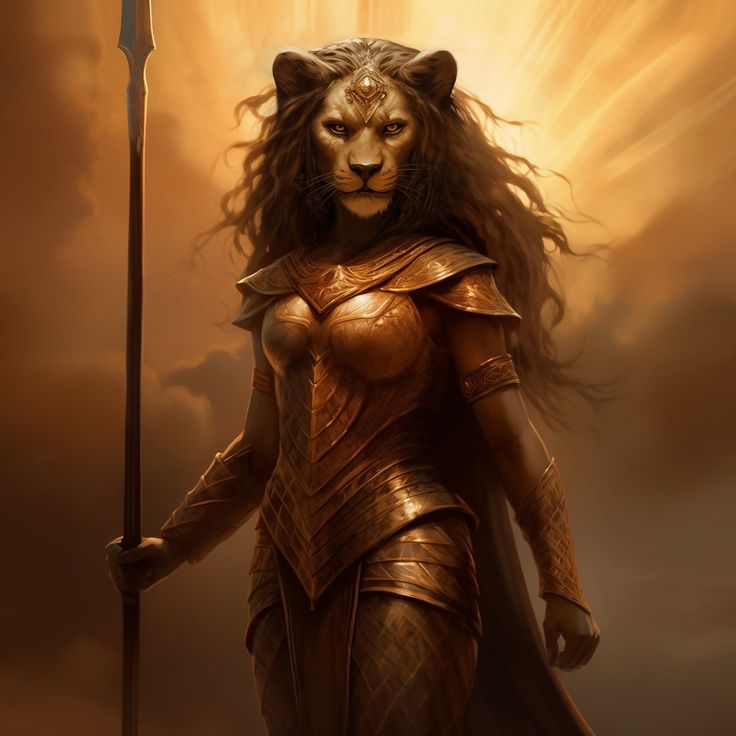
Sekhmet is the Goddess of destruction, plagues and healing. She is often portrayed as a woman wearing a red dress with the head of a lioness, wearing a sun disc circled by a cobra on her head. Amulets depict her usually standing, holding a papyrus-shaped scepter. She is also addressed as the solar goddess. The “book of dead” has references of Sekhmet as a creative and a destructive force.
The story of Sekhmet is an interesting one. When the Sun God – Ra, her father decided to destroy mankind due to their disobedience and crime, he created Sekhmet who created havoc on earth, drinking blood of the dead and the dying. Ra realized he had made a mistake as Sekhmet was unstoppable, he planned and got the local people to brew some beer, dye it red and then pour it on the ground to pacify her blood thirst. 7000 jars of red beer was poured in the quite hours of the night when Sekhmet was sleeping.
The next day, when Sekhmet woke up, she thought the beer was blood, and drank it and got intoxicated and eventually stopped her killings. People today relate this to the flooding of Nile when it turns red due to silt and it is believed that Sekhmet swallows the river to keep it from destroying Egypt. She is also called the protector of the Ma’at.
Sekhmet is also said to breathe fire. Egyptians compare her fiery breath to the hot winds of the desert. Bastet who is the cat-headed goddess is considered as the gentle counterpart to the lion-headed Sekhmet whose uncontrollable temper was feared by all.
Celebrations and sacrifices are often offered to the Goddess to appease her after the war and end the destruction. She is considered as the angry manifestation of her father Ra’s power and her famous epithet is “the one before whom evil trembles”. She is also considered as the goddess of strategy. While her dark and furious side may bring disease and plague to those who wrong her, she is also a master of the art of medicine as she provides the cure to various ailments she may have brought to humankind.
Egyptians in the olden days, looked up to Sekhmet as a curet for all their problems. In order to stay on their good side, they offered her food and drinks, music and burned incense. They would whisper their prayers into the ears of cat mummies before offering them to Sekhmet as it was believed that cats had a direct connection to her.
Sekhmet’s son Mahees was the patron of pharaohs and pyramid texts. This elevated Sekhmet in the Gods and Goddesses pantheon hierarchy. While Sekhmet protected the pharaohs and led them to war, she was the patron of physicians and healers and her priests and worshippers were skilled doctors.
Copyright © Myth Matters 2024| All Rights Reserved